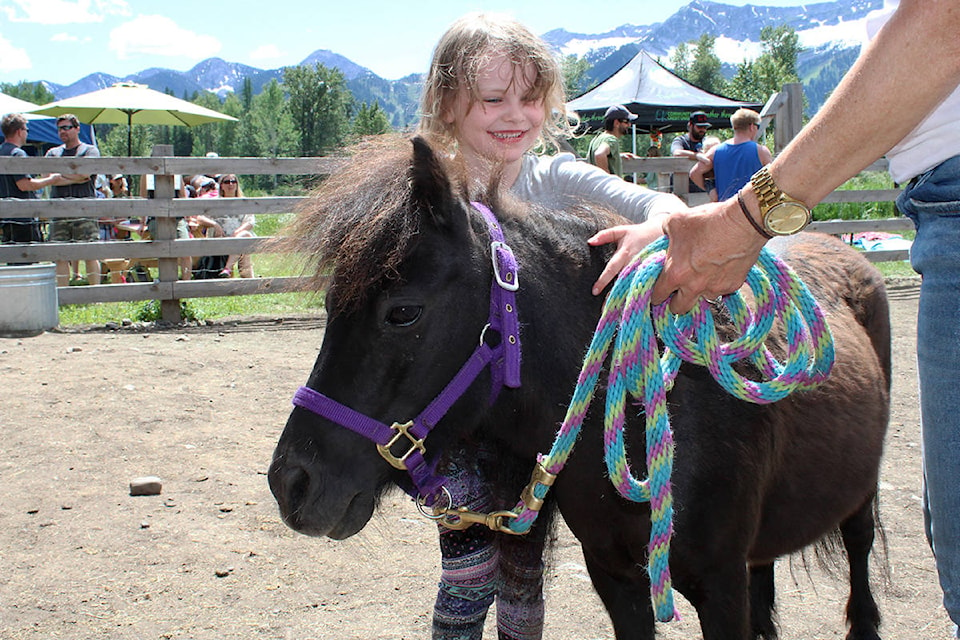She does not know the first thing about psychotherapy. She cannot prescribe medication, she can’t read and she happens to be a horse but a growing number of professionals believe that Sher, a therapy horse, and those like her possess the intuitive skills to help people through a host of problems.
Dozens of children arrived to see therapy horses Sher, Cowboy, Daphne and Skerpa as the Fernie Therapeutic Horse and Pony Club held their first “Open Barn” fundraiser at The Old Barn last Saturday.
Funds raised from donations, a barbecue and bake sale, silent auction, raffle and a chicken poop lottery will be used to send some of the club’s volunteers to workshops in order to further their knowledge and certification in equine therapy, and also toward operation costs for the non-profit group.
“It’s a way to introduce people to the horses and tell them a little bit about the program,” said the club’s program director Aaron Levesque. “It’s also to raise funds to help support the program and grow it. We need all the help we can get and we’re lucky we’ve got a community like Fernie that is more than happy to pitch in and help us out.”
Supervised by occupational therapist Renee Fairchild, three local children attend regular sessions at the club for equine-assisted therapy. One has autism, another has attention-deficit hyperactivity disorder and the third suffers from anxiety.
Levesque said horses make great companions for psychotherapy because they are attuned to and mirror human behaviour.
“If I come in and I’m feeling rushed and anxious, they behave differently. The horses will reflect that back to you,” she said. “So it teaches you to be really mindful of how you’re feeling.”
The club’s horses have distinct personalities and work in different capacities depending on the needs of the patient, she said. A typical session can take many forms, including activities such as grooming, petting, feeding and cleaning.
Other sessions involve leading the horses around by their bridle and learning commands on how to make them move forward or stop.
“They’re fight or flight animals, so they require us to handle them in a way that really creates a bond of trust,” said Levesque. “If you don’t earn their trust it’s difficult to work with them and by nature they’re just kind. They want to have a peaceful existence.”
Club president Patricia Harris Seeley said another benefit to kids is the therapy horses offer unconditional love to individuals who might not find that among their peers.
“Bullying is so bad for kids in school,” she said. “This is an escape where the horses accept you and sometimes the kids need something they can connect with that loves them no matter what. We have a lot of kids that just love that.”
Author Lorna Shultz Nicholson was so inspired by Fernie’s therapy horses, she included them in her book Bent Not Broken.
Shultz attended the fundraiser to read passages from her book, which chronicles a young woman named Madeline who is left with a traumatic brain injury after a bike accident.
Madeline faces challenges. The loss of her independence, the divorce of her parents and the anger of her twin sister Becky present challenges to the young heroin. Luckily, she can rely on a miniature therapy horse she visits every week.
Shultz was inspired to write the book by the Best Buddies Program, which pairs students with intellectual disabilities with their classmates for one school year.
In the book, Madeline comes to terms with her disability through the help of her horse.
“There’s an understanding between the horse and the person,” said Shultz. “She can just come and the horse understands her and it doesn’t have any expectations of her.”
